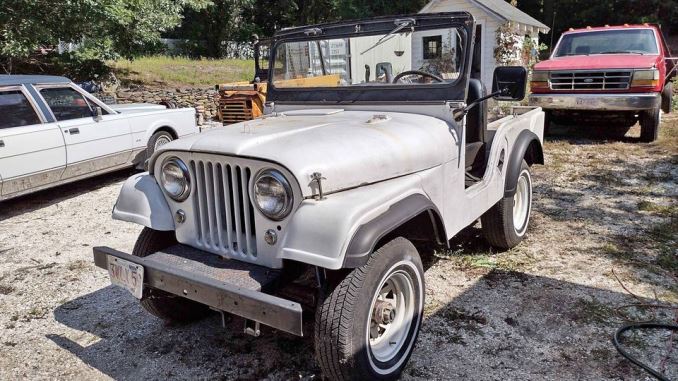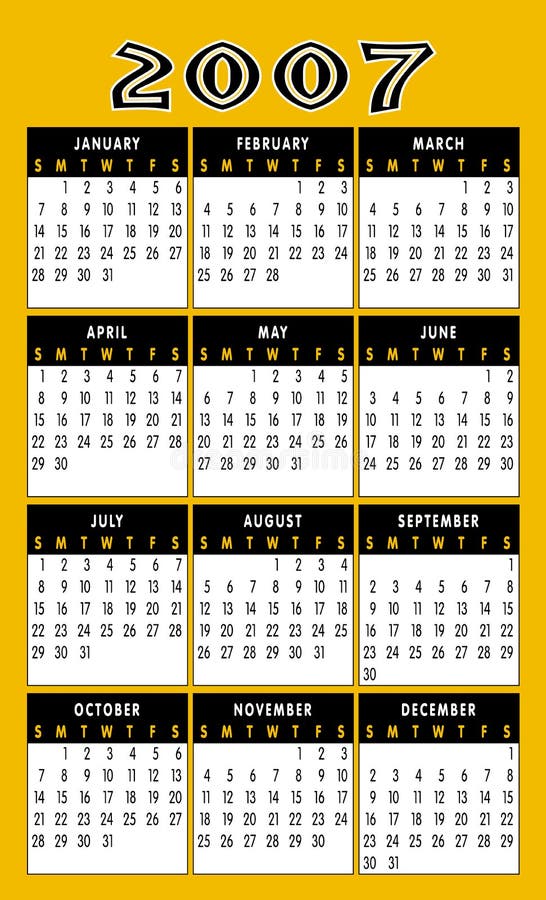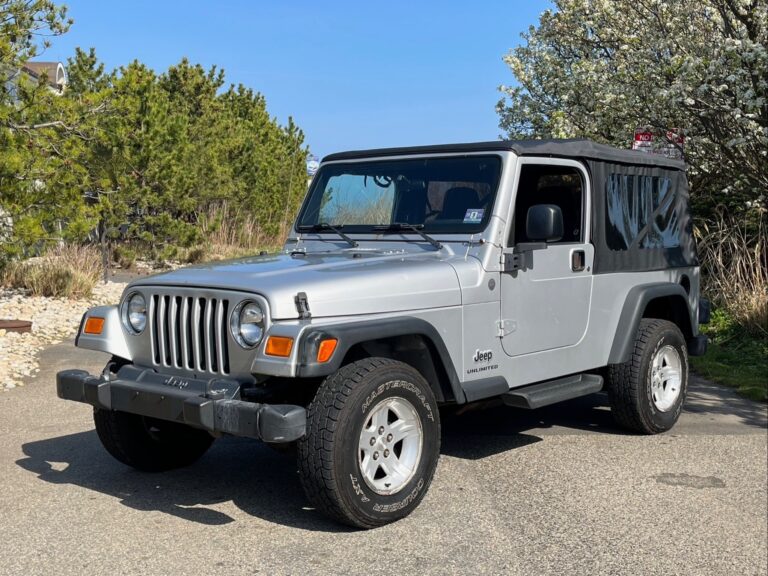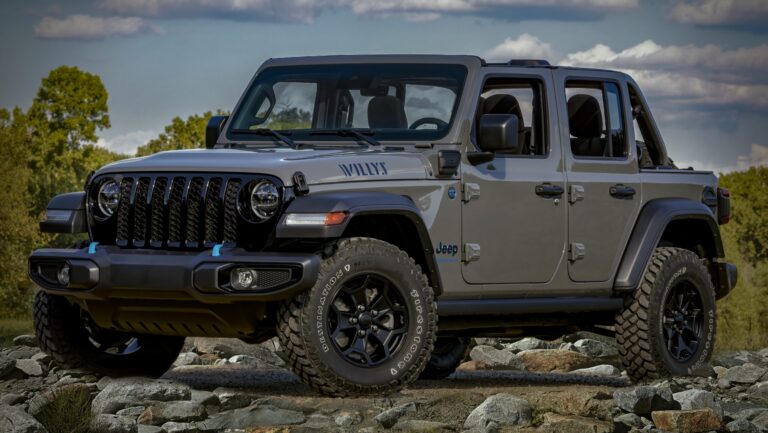1961 Willys Jeep For Sale: Your Comprehensive Buyer’s Guide
1961 Willys Jeep For Sale: Your Comprehensive Buyer’s Guide jeeps.truckstrend.com
The year 1961 might seem like a distant past, yet for automotive enthusiasts, it represents a golden era for iconic vehicles. Among them, the 1961 Willys Jeep stands out as a true legend. More than just a utility vehicle, it’s a tangible piece of American history, a symbol of rugged individualism, and an enduring testament to simple, robust engineering. For those seeking an authentic, go-anywhere classic that offers unparalleled character and a deep connection to its roots, finding a 1961 Willys Jeep for sale is an exciting prospect. This comprehensive guide aims to equip potential buyers with the knowledge and insights needed to navigate the market, understand what to look for, and ultimately, drive home their very own piece of automotive heritage.
The Enduring Legacy of the 1961 Willys Jeep
1961 Willys Jeep For Sale: Your Comprehensive Buyer’s Guide
To understand the appeal of a 1961 Willys Jeep, one must first appreciate its lineage. The Willys-Overland company, and later Kaiser-Jeep, produced the Civilian Jeep (CJ) series, directly descended from the legendary military MB and Ford GPW models of World War II. By 1961, Willys had refined the CJ line into several distinct models, primarily the CJ-3B and the CJ-5, with the longer wheelbase CJ-6 also available.
The CJ-3B, affectionately known as the "High Hood" Jeep, was produced from 1953 to 1968. Its distinctive tall grille and hood were necessary to accommodate the new, more powerful Willys Hurricane F-head engine, which offered improved horsepower and torque over the earlier Go-Devil engine. This model retained much of the classic, compact Jeep silhouette, making it highly maneuverable and practical for farm work, light industry, and recreational off-roading.
The CJ-5, introduced in 1955, was a more modern interpretation, based on the military M38A1. It featured rounded fenders, a slightly longer wheelbase than the CJ-3B, and a more comfortable ride (relatively speaking). The 1961 CJ-5 models still largely utilized the Hurricane engine, though later iterations would introduce V6 and V8 options. The CJ-5 would go on to be one of the longest-produced vehicles in history, cementing its iconic status.
Regardless of the specific model, a 1961 Willys Jeep embodies simplicity, durability, and a no-frills approach to utility. These vehicles were built to work, conquer challenging terrain, and last for decades. This rugged charm, combined with their historical significance, makes them highly desirable among collectors, off-road enthusiasts, and anyone looking for a unique classic vehicle that truly stands apart.
What to Look For When Buying a 1961 Willys Jeep
Acquiring a classic vehicle, especially one as venerable as a 1961 Willys Jeep, requires careful consideration. These vehicles are old, and their condition can vary wildly. Here’s a detailed breakdown of what to scrutinize:
1. Condition Categories:
- Project Vehicle: Requires significant work (engine, transmission, body, frame). Best for experienced restorers or those with a substantial budget for professional work. Expect the lowest purchase price.
- Running/Driving Original: A functional vehicle that retains much of its original components and patina. May have minor mechanical issues, rust, or cosmetic flaws. Ideal for those who want to drive and gradually improve.
- Nicely Restored: A vehicle that has undergone a comprehensive restoration, addressing mechanical, body, and paint issues. Should be in excellent cosmetic and mechanical condition. Commands a higher price.
- Concours/Show Quality: A meticulously restored or preserved vehicle, often aiming for factory-correct originality. These are rare and at the top end of the price spectrum, often purchased by serious collectors.


2. Key Inspection Points:
- Frame: This is paramount. Inspect the entire frame for rust, especially near spring hangers, body mounts, and crossmembers. Look for cracks, previous welds, or signs of accident damage. A severely rusted or bent frame can be a deal-breaker.
- Body Tub & Fenders: Willys Jeeps are notorious for rust in the body tub (floorboards, rear wheel wells, hat channels underneath), rocker panels, and lower fender sections. Check for bondo, bubbling paint, or poorly executed patch panels. Reproduction tubs are available but costly.
- Engine: The 1961 models typically feature the 4-cylinder Hurricane F-head engine (or the earlier Go-Devil in some rare cases, but less likely for ’61). Check for leaks (oil, coolant), unusual noises, smoke from the exhaust, and overall running smoothness. Compression tests are highly recommended. Ensure it starts easily.
- Transmission & Transfer Case: Most will have a 3-speed manual transmission (T-90) and a two-speed transfer case (Dana 18). Test shifting through all gears, including 4-high and 4-low. Listen for grinding, popping out of gear, or excessive noise. Ensure the 4×4 engages properly.
- Axles & Drivetrain: Check for leaks around the differential covers. Look for excessive play in the universal joints (U-joints) and driveshafts.
- Brakes: Willys Jeeps use drum brakes all around. Test pedal feel (should be firm, not spongy) and stopping power. Inspect brake lines for rust or leaks. Many owners upgrade to disc brakes, which is a positive modification for safety.
- Steering & Suspension: Check for excessive play in the steering wheel. Inspect leaf springs for cracks, sagging, or broken leaves. Look at shocks for leaks.
- Electrical System: Many older Jeeps have been converted from 6-volt to 12-volt systems. Ensure all lights, gauges, and accessories work. Look for frayed wires, amateur wiring jobs, or corrosion.
- Documentation: A clean, transferable title is essential. Any service records, original owner’s manuals, or historical documents add value and provide insight into the vehicle’s past.
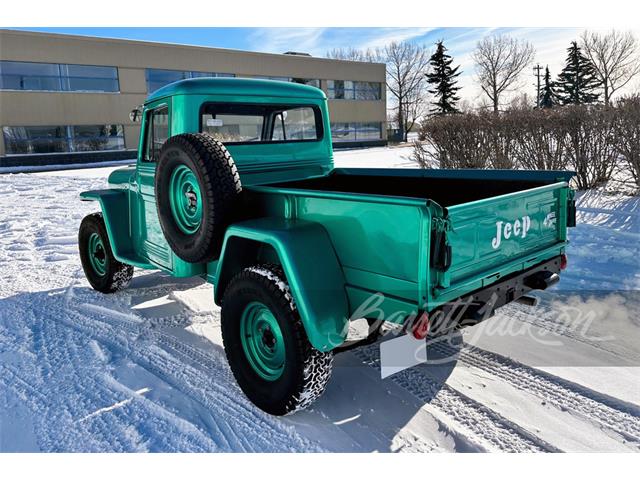
Understanding Valuation and Pricing
The price of a 1961 Willys Jeep can vary significantly based on its condition, originality, specific model (CJ-3B vs. CJ-5), geographical location, and current market demand.
Factors Influencing Price:
- Condition is King: A fully restored, show-quality example will command a premium over a rusty project.
- Originality vs. Modification: Highly original, unmolested examples often fetch more, especially if they are well-preserved. However, tasteful and functional upgrades (e.g., disc brakes, 12V conversion, modern engine swap) can also add value for certain buyers.
- Rarity: While not extremely rare, a well-documented example or one with unique factory options might be more valuable.
- Location: Prices can fluctuate based on regional demand and availability.
- Documentation: A complete history and clear title add peace of mind and value.
To research comparable sales, utilize online classic car marketplaces (e.g., Hemmings, ClassicCars.com, Bring a Trailer), auction results, and dedicated Willys Jeep forums or classifieds. Don’t be afraid to ask for detailed photos and videos from sellers.
The Buying Process: Tips and Practical Advice
- Set a Realistic Budget: Not just for the purchase price, but also for potential repairs, maintenance, insurance, and registration. Remember, older vehicles almost always require ongoing attention.
- Where to Look:
- Online Marketplaces: Hemmings, ClassicCars.com, eBay Motors, Craigslist, Facebook Marketplace.
- Specialized Forums & Clubs: Willys-specific forums and clubs often have classified sections with knowledgeable sellers and buyers.
- Classic Car Dealers: Some dealerships specialize in vintage 4x4s, offering higher prices but potentially more vetted vehicles.
- Auctions: Can be exciting but require quick decision-making and often don’t allow for thorough pre-purchase inspections.
- Ask Detailed Questions: Inquire about the vehicle’s history, recent maintenance, known issues, rust, and whether the title is clean. Request photos of specific areas you’re concerned about.
- Pre-Purchase Inspection (PPI): If serious about a vehicle, especially one out of state, arrange for a professional mechanic specializing in classic cars or 4x4s to inspect it. This can save you from costly surprises.
- Test Drive: If possible, drive the Jeep yourself. Pay attention to how it starts, idles, accelerates, shifts, brakes, and steers. Listen for unusual noises. Remember, these are not modern vehicles; they will be loud, rough, and slow by contemporary standards.
- Negotiation: Be prepared to negotiate, especially if you’ve identified issues during your inspection.
- Title Transfer & Registration: Ensure all paperwork is in order for a smooth transfer of ownership and registration in your state.
Ownership Experience: Challenges and Rewards
Owning a 1961 Willys Jeep is a unique experience, blending nostalgic charm with the realities of classic vehicle ownership.
Challenges:
- Parts Availability: While many common mechanical parts (engine, transmission, axles) are still available through specialty suppliers, specific body panels or trim pieces can be harder to find.
- Maintenance: These vehicles are mechanically simple, making them easier to work on for the average enthusiast. However, they require regular attention due to their age and design.
- Comfort & Convenience: Expect a spartan interior, manual steering, manual brakes, and minimal sound insulation. Long highway trips can be taxing.
- Speed & Performance: A 1961 Willys Jeep is not built for speed. Its top cruising speed is generally around 45-55 mph, making it less suitable for modern highway driving.
- Safety: Lacking modern safety features like airbags, ABS, or crumple zones, these vehicles require extra caution on the road.
Rewards:
- Unmatched Character: The raw, utilitarian nature of a Willys Jeep is its greatest charm. It’s a conversation starter everywhere it goes.
- Community: The Willys Jeep community is vibrant and supportive, offering a wealth of knowledge, parts sources, and camaraderie.
- Off-Road Capability: Despite its age, a well-maintained Willys Jeep remains incredibly capable off-road, thanks to its light weight, short wheelbase, and robust 4×4 system.
- Investment Potential: Well-preserved or expertly restored examples can appreciate in value over time.
- The "Jeep Wave": You’ll join a global brotherhood of Jeep owners.
- Pure Driving Fun: There’s an undeniable joy in driving something so mechanical, so connected to the road (or trail).
Restoration vs. Preservation
When considering a 1961 Willys Jeep, you’ll likely face a choice between restoration and preservation.
- Restoration: This involves bringing the vehicle back to "like new" condition, often exceeding its original factory finish. It’s ideal for severely deteriorated vehicles or those aiming for concours-level perfection. Be prepared for significant financial and time investment, as costs can easily outstrip the vehicle’s market value.
- Preservation: This approach focuses on maintaining the vehicle in its current, original condition, embracing its patina, wear, and history. It’s suitable for well-kept original examples or "survivors." Preservation often involves mechanical refurbishment to ensure reliability while leaving the cosmetic "story" intact. This is often a more cost-effective and historically respectful approach for many vehicles.
The choice depends on the vehicle’s initial condition, your budget, and your personal vision for the Jeep.
1961 Willys Jeep Estimated Price Table
| Condition Category | Description | Estimated Price Range (USD) |
|---|---|---|
| Project Vehicle | Non-running or barely running; significant rust, mechanical issues, missing parts; requires full restoration. | $3,000 – $8,000 |
| Running/Driving Original | Runs and drives; largely original components with visible wear, dents, surface rust, and minor mechanical quirks; good candidate for a driver or rolling restoration. | $8,000 – $18,000 |
| Nicely Restored Driver | Comprehensive restoration completed; solid frame and body; reliable mechanicals; good paint and interior; suitable for regular driving and local shows. | $18,000 – $35,000 |
| Concours/Show Quality | Meticulously restored to factory specifications or better; near-flawless condition; all systems function perfectly; often documented with awards or high-quality photography. | $35,000 – $60,000+ |
Note: These are estimates and actual prices can vary based on specific model (CJ-3B, CJ-5, CJ-6), originality, modifications, historical significance, and market demand.
Frequently Asked Questions (FAQ)
Q: Are parts readily available for a 1961 Willys Jeep?
A: Yes, generally. Many mechanical parts for the engine (Hurricane F-head), transmission (T-90), transfer case (Dana 18), and axles (Dana 25/44) are still available through specialty Willys/Jeep parts suppliers. Body panels and specific trim pieces might be harder to find but reproductions exist.
Q: Can a 1961 Willys Jeep be a daily driver?
A: While mechanically robust, it’s generally not recommended as a daily driver in modern traffic due to its slow speed, lack of comfort features, and absence of modern safety equipment. It’s best suited for recreational use, short trips, and off-roading.
Q: What’s the fuel economy like?
A: Don’t expect hybrid-level efficiency. With the Hurricane engine, you can typically expect around 12-18 miles per gallon, depending on driving conditions, vehicle weight, and gearing.
Q: Is it safe to drive a 1961 Willys Jeep?
A: It is safe if well-maintained and driven cautiously, understanding its limitations. However, it lacks airbags, crumple zones, anti-lock brakes, and other modern safety features. Defensive driving is paramount. Many owners upgrade to disc brakes for improved stopping power.
Q: What’s the difference between a CJ-3B and a CJ-5 from 1961?
A: The CJ-3B ("High Hood") has a distinctive tall hood and grille to accommodate the Hurricane engine, retaining a more vintage, compact appearance. The CJ-5 has a more rounded, updated body style based on the military M38A1, with slightly larger dimensions and a longer wheelbase, offering a marginally smoother ride. Both typically used the same Hurricane F-head engine in 1961.
Q: How much horsepower does a 1961 Willys Jeep have?
A: The Willys Hurricane F-head engine typically produced around 72 horsepower and 114 lb-ft of torque. While this sounds low by modern standards, it was sufficient for its intended purpose, especially with the Jeep’s low gearing and light weight.
Conclusion
The pursuit of a 1961 Willys Jeep for sale is more than just a vehicle purchase; it’s an investment in history, character, and an authentic driving experience. These iconic machines offer a refreshing simplicity in an increasingly complex world, connecting their owners to a lineage of rugged utility and adventure. By understanding the different models, knowing what to inspect, being realistic about costs, and preparing for the unique joys and challenges of classic ownership, you can confidently navigate the market. Bringing a 1961 Willys Jeep home isn’t just about acquiring a vehicle; it’s about embracing a lifestyle, joining a passionate community, and preserving a tangible piece of automotive Americana for generations to come. The open-air freedom, the unmistakable silhouette, and the sheer joy of piloting such a historic machine make the journey of finding and owning a 1961 Willys Jeep an incredibly rewarding endeavor.
